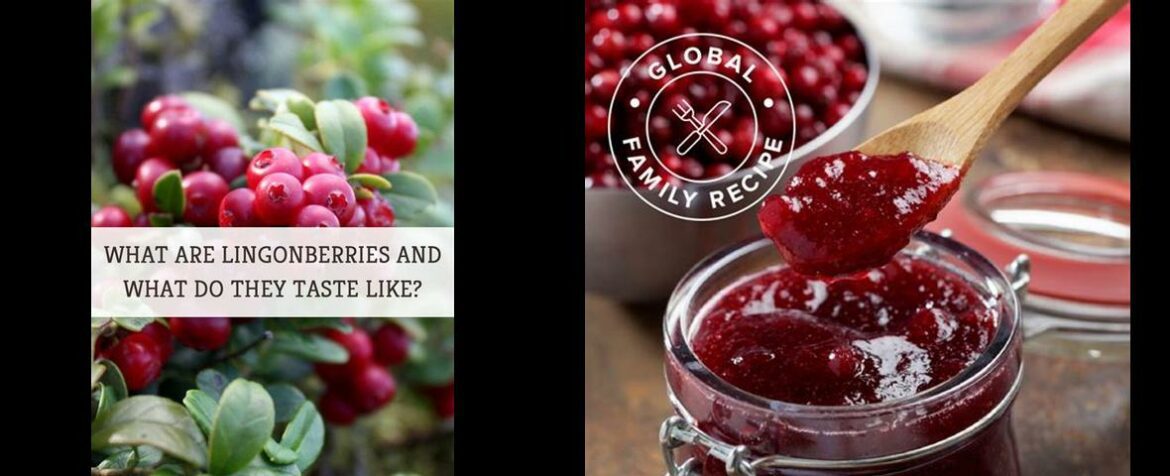What Does Lingonberry Taste Like – Have you ever wondered what magic tastes like? Well, get ready to embark on a flavor adventure as we delve into the enchanting world of lingonberries. These little red berries pack a punch of both sweet and tart flavors, creating a symphony of delights for your taste buds. Whether you’re a foodie looking to add a unique twist to your recipes or simply curious about this Nordic gem, we’ve got all the answers to your burning question: What does lingonberry taste like? Get ready to be pleasantly surprised as we uncover the secrets of this delectable berry.
The Enchanting Lingonberry: A Symphony of Sweet and Tart Delights
In the realm of culinary treasures, the lingonberry stands out as a jewel of the forest, captivating taste buds with its unique and tantalizing flavor profile. This vibrant red berry, native to the northern regions of Europe, Asia, and North America, holds a special place in the hearts of those who have had the pleasure of experiencing its delectable charm.
A Delicate Dance of Sweetness and Tartness
The lingonberry’s flavor is a harmonious blend of sweetness and tartness, reminiscent of its close relative, the cranberry. Its taste profile is characterized by a bright, tangy acidity that is balanced by a subtle sweetness. This interplay of flavors creates a complex and refreshing experience that lingers on the palate, leaving a lasting impression.
Seasonal Delights: Capturing the Essence of Freshness
The lingonberry’s peak season spans from late summer to early winter, a time when the berries are at their plumpest and juiciest. During this fleeting window, the berries burst with a vibrant sweetness that is perfectly complemented by their inherent tartness. Whether enjoyed fresh off the bush or incorporated into culinary creations, the lingonberry’s seasonal bounty offers a symphony of flavors that is not to be missed.
Versatile Culinary Companion: From Raw Indulgence to Culinary Creations
The lingonberry’s culinary versatility knows no bounds. It can be enjoyed in its raw form, offering a burst of sweet-tart flavor that is both refreshing and invigorating. The berries’ natural acidity makes them an ideal ingredient for syrups, jams, and sauces, adding a unique tang to pancakes, waffles, and vanilla ice cream.
Beyond its sweet applications, the lingonberry also shines in savory dishes. Its tartness lends a delightful balance to soups, stews, and even cocktails. Its vibrant red hue adds a pop of color to baked goods, making it a visually appealing addition to muffins, scones, and cakes.
A Treasure Trove of Nutrients: Unveiling the Lingonberry’s Hidden Depths
Beneath its delectable exterior, the lingonberry harbors a wealth of nutritional riches. It is a potent source of Vitamin C, a powerful antioxidant that plays a vital role in immune system health. Additionally, the berry boasts an impressive array of other vitamins and minerals, including Vitamin A, Vitamin K, and potassium.
The lingonberry’s antioxidant properties extend beyond Vitamin C, with studies suggesting that it may help protect against certain types of cancer and heart disease. Its anti-inflammatory properties may also play a role in reducing the risk of chronic diseases.
Exploring the Culinary Landscape of Lingonberry Delights
The lingonberry’s culinary journey takes us across borders and cultures, revealing a diverse array of dishes that showcase its unique flavor. In Sweden, lingonberry jam is a beloved condiment, served alongside meatballs, pancakes, and even ice cream. The tartness of the jam cuts through the richness of these dishes, creating a harmonious balance of flavors.
In Finland, lingonberry soup is a traditional delicacy, enjoyed during special occasions and everyday meals alike. The soup’s creamy texture and tangy flavor make it a comforting and flavorful dish, perfect for chilly days.
In Russia, lingonberry wine is a popular libation, prized for its vibrant color and refreshing taste. The wine’s sweetness is balanced by the berry’s natural tartness, resulting in a delightful and sophisticated beverage.
Unveiling Lingonberry’s Elusive Charm: A Culinary Gem Awaiting Discovery
Despite its remarkable flavor and versatility, the lingonberry remains a relatively obscure fruit in many parts of the world. Its limited availability outside of its native regions may contribute to its elusive status. However, for those fortunate enough to encounter this culinary gem, the lingonberry offers an unforgettable taste experience that is sure to leave a lasting impression.
As you embark on your culinary adventures, keep an eye out for this hidden treasure. Whether you savor its fresh, tangy flavor or incorporate it into your culinary creations, the lingonberry promises to tantalize your taste buds and transport you to a world of culinary delight.
FAQ about Lingonberry Taste
Q: What does a lingonberry taste like?
A: The lingonberry has a flavor that combines sweetness and tartness, similar to cranberries. It has a bright, tangy acidity balanced by a subtle sweetness.
Q: How would you describe the taste profile of a lingonberry?
A: The taste profile of a lingonberry is characterized by a delicate dance of sweetness and tartness. It offers a complex and refreshing experience that lingers on the palate.
Q: What are some traditional dishes that incorporate lingonberries?
A: In Finland, lingonberry soup is a traditional delicacy enjoyed during special occasions and everyday meals. In Russia, lingonberry wine is a popular libation known for its vibrant color and refreshing taste.
Q: What nutritional benefits does a lingonberry offer?
A: Lingonberries are a rich source of Vitamin C, which is important for immune system health. They also contain other vitamins and minerals such as Vitamin A, Vitamin K, and potassium.
Q: Can lingonberries be used in culinary creations?
A: Yes, lingonberries can be used in various culinary creations. Their fresh, tangy flavor adds a unique twist to dishes and can be enjoyed in sauces, jams, desserts, and more.
Q: Are lingonberries only available during specific seasons?
A: Lingonberries are seasonal delights, typically available during certain times of the year. However, they can also be found in preserved forms such as jams or frozen, allowing you to enjoy their essence of freshness throughout the year.


